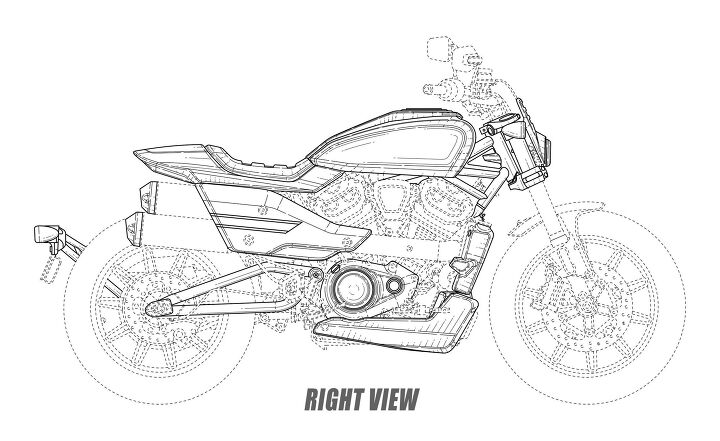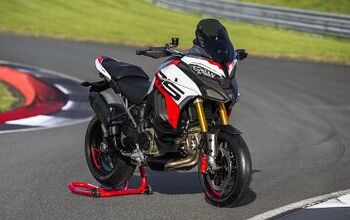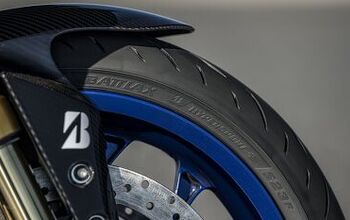Harley-Davidson Files Cafe Racer and Flat Tracker Designs With Revolution Max Engine - Motorcycle.com
Harley-Davidson Files Cafe Racer and Flat Tracker Designs with Revolution Max Engine
Two more liquid-cooled models to follow Bronx and Pan America
Harley-Davidson has filed designs with the European Union Intellectual Property Office for two more models using the liquid-cooled Revolution Max engine powering the Pan America and Bronx. The two new designs, one a cafe racer and the other a flat track-inspired model, further add to the modular concept promised with the new engine platform.
Both designs clearly feature the DOHC Revolution Max V-Twin engine, though it’s unclear what the engine displacements will be. The Pan America adventure bike uses a 1250cc version of the engine and the Bronx streetfighter runs with a 975cc version. Harley-Davidson has previously said it plans to produce four different displacements, ranging from 500cc to 1250cc.
UPDATE: We’ve found photos of prototypes of both of these new designs from a Harley-Davidson investor presentation from September 2019. There are some slight differences between the prototypes in the photos and the drawings, but the overall designs are similar.
Flat Tracker Design
The flat track-inspired model looks like a natural rival to the Indian FTR1200. Like the Indian, it sports a tubular swingarm, and the high-mounted twin exhaust further reflects its flat tracker influences. In un-Harley-Davidson fashion, the design has fairly neutral foot position, with the pegs mounted behind the swingarm pivot.
The designs show dual front disc brakes, though the dashed lines don’t provide a good look at the calipers. The front suspension appears to be an inverted fork, and from our measurements, appears to have a rake angle of around 23°. We can’t get a good look at the rear monoshock, though we can spot a linkage setup. Like the FTR, the Harley design uses rear tire-hugging license plate bracket attached to the swingarm by a tubular mount, though the angles and diameters of the tubing don’t look as elegant as on the Indian.
Other details we can make out include a small front fender, single seating and a single circular instrument nacelle.
Cafe Racer Design
The second design sports a cafe-style headlight fairing with a short windscreen. The exhaust follows a more traditional routing to a single silencer. The handlebars are relatively low (barely higher than the top of the fuel tank) and the foot pegs are higher and slightly further back than on the flat-tracker model.
This design shares the other’s dual disc brakes and inverted fork, but the rear has a more traditional swingarm suspended by dual shocks. Unlike the flat track design, the cafe racer has passenger pegs for two-up riding.
It’s hard to get a sense of scale between the two bikes, but assuming a similar sized front brake rotor, the cafe racer has smaller wheels than the flat tracker.
We’re still waiting for the Pan America and the Bronx to go into production later this year, with the Custom 1250 cruiser scheduled for next year. These designs show that Harley-Davidson has further models close behind.
Harley-Davidson Communities
More by Dennis Chung


































Comments
Join the conversation